The Chinese People’s Liberation Army (PLA) does not yet have the military capability to wage an all-out war against Taiwan, given the demanding geological environment of the Taiwan Strait, a Ministry of National Defense report said.
The China Military Power Report 2020, which the ministry yesterday submitted to the Legislative Yuan for review, said the PLA still lacks the landing vehicles and logistics required to launch an incursion into Taiwan via the Taiwan Strait.
If Beijing were to wage a war now, its combat plans could take the form of military intimidation, blockades, firepower strikes and landing operations, the report said.
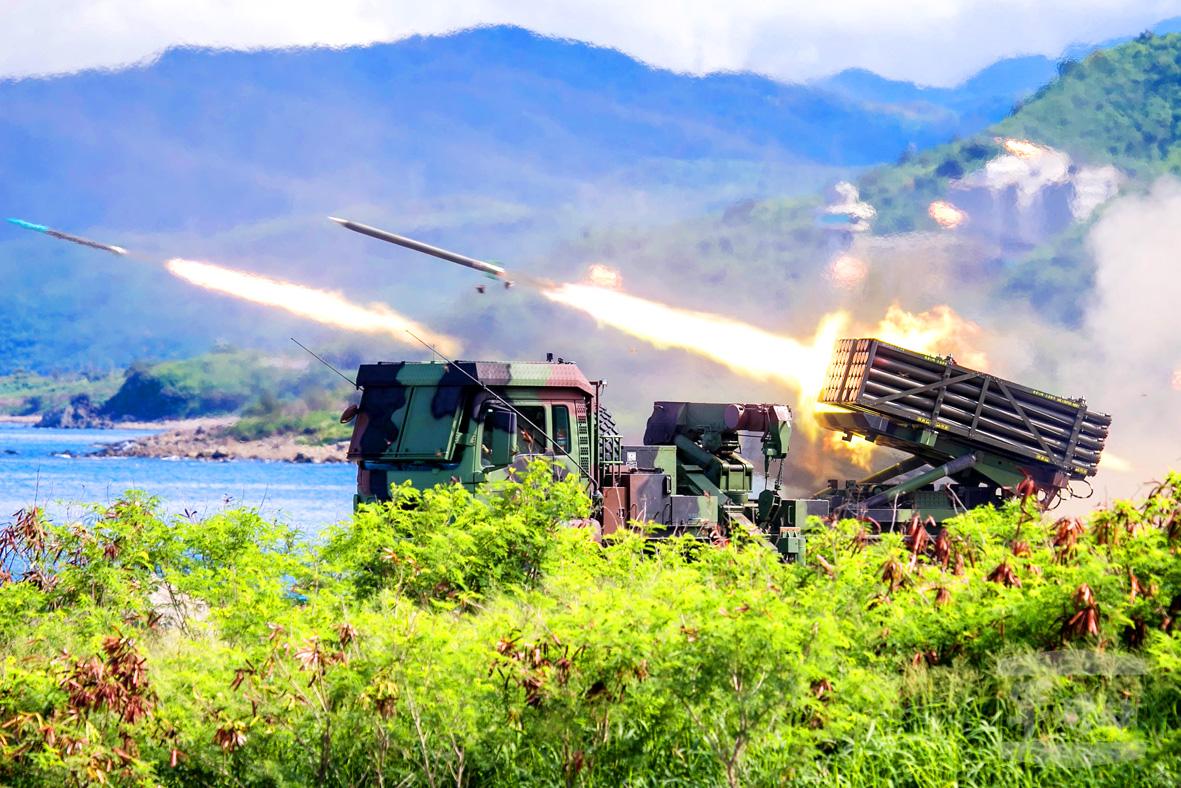
Photo courtesy of Military News Agency
The PLA could intensify its military exercises, or sail warships to waters within 24 nautical miles (45km) of Taiwan by claiming “freedom of passage” and “innocent passage,” in an attempt to generate a sense of fear among Taiwanese, it said.
It could cut off Taiwan’s supplies and demand surrender by blocking Taiwan’s major ports and maritime transportation, it said.
The PLA could also launch missiles that target Taiwan’s command systems, locations of great economic and political importance, or symbolic objects, as part of efforts to gradually disintegrate Taiwanese morale, it said.
Forceful occupation of Taiwan’s outlying islands by the PLA might take place during this stage, it added.
If the PLA had achieved air supremacy, command of the sea and electromagnetic spectrum dominance, and had wrecked most of Taiwan’s armed forces, its next move would likely be to send sea, air, land and rocket teams to conduct a series of attacks, such as decapitation strikes, raiding Penghu and ultimately invading Taiwan, it said.
However, its current capabilities for an all-out invasion of Taiwan are still limited, the report said, citing a lack of landing vehicles and logistics.
Beijing’s aim to ensure that it would have the capability to defeat Taiwan in any battle by the end of this year is clear, as it has continued to equip the Chinese air force with more warplanes and drones, the report said.
China has also strengthened its response mechanism to US scout planes when they fly near its coastline, the report said.
The PLA performs daily exercises in the skies and waters off the west of the median line of the Taiwan Strait, it said.
Besides attempts in February and this month to send warplanes through the median line to gauge Taiwan’s reaction, the PLA could dispatch aircraft to circulate in the skies southwest of Taiwan on a regular basis to squeeze the Taiwanese military’s airspace.
With mainstay fighters equipped with sophisticated precision-guided weapons, and supported by uncrewed combat air vehicles, it is believed that the PLA has been able to deploy both soft-kill and hard-kill measures with its space weapons, the report said.
It has acquired the preliminary qualities required to control the skies, sea and Taiwanese countermeasure systems in battles against Taiwan, it added.
In other news, the ministry yesterday said that a US Navy warship had transited through the Taiwan Strait, the second such operation in two weeks.
The US Navy said the Arleigh Burke-class guided-missile destroyer USS Halsey conducted a “routine Taiwan Strait transit” on Sunday in accordance with international law.
“The ship’s transit through the Taiwan Strait demonstrates the US’ commitment to a free and open Indo-Pacific. The US Navy will continue to fly, sail and operate anywhere international law allows,” US Seventh Fleet representative Reann Mommsen said.
The defense ministry said the destroyer had sailed in a southerly direction through the Strait and was continuing to sail south.
The ship was on an “ordinary mission” and the situation was “normal,” the ministry added, without giving details.
Additional reporting by Reuters
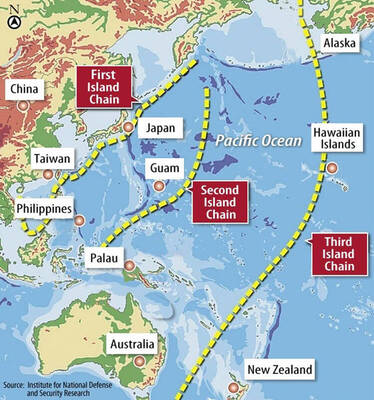
The US government has signed defense cooperation agreements with Japan and the Philippines to boost the deterrence capabilities of countries in the first island chain, a report by the National Security Bureau (NSB) showed. The main countries on the first island chain include the two nations and Taiwan. The bureau is to present the report at a meeting of the legislature’s Foreign Affairs and National Defense Committee tomorrow. The US military has deployed Typhon missile systems to Japan’s Yamaguchi Prefecture and Zambales province in the Philippines during their joint military exercises. It has also installed NMESIS anti-ship systems in Japan’s Okinawa
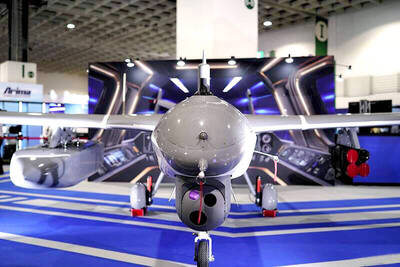
‘WIN-WIN’: The Philippines, and central and eastern European countries are important potential drone cooperation partners, Minister of Foreign Affairs Lin Chia-lung said Minister of Foreign Affairs Lin Chia-lung (林佳龍) in an interview published yesterday confirmed that there are joint ventures between Taiwan and Poland in the drone industry. Lin made the remark in an exclusive interview with the Chinese-language Liberty Times (the Taipei Times’ sister paper). The government-backed Taiwan Excellence Drone International Business Opportunities Alliance and the Polish Chamber of Unmanned Systems on Wednesday last week signed a memorandum of understanding in Poland to develop a “non-China” supply chain for drones and work together on key technologies. Asked if Taiwan prioritized Poland among central and eastern European countries in drone collaboration, Lin
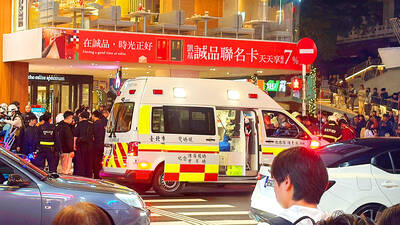
TRAGEDY STRIKES TAIPEI: The suspect died after falling off a building after he threw smoke grenades into Taipei Main Station and went on a killing spree in Zhongshan A 27-year-old suspect allegedly threw smoke grenades in Taipei Main Station and then proceeded to Zhongshan MRT Station in a random killing spree that resulted in the death of the suspect and two other civilians, and seven injured, including one in critical condition, as of press time last night. The suspect, identified as a man surnamed Chang Wen (張文), allegedly began the attack at Taipei Main Station, the Taipei Fire Department said, adding that it received a report at 5:24pm that smoke grenades had been thrown in the station. One man in his 50s was rushed to hospital after a cardiac arrest
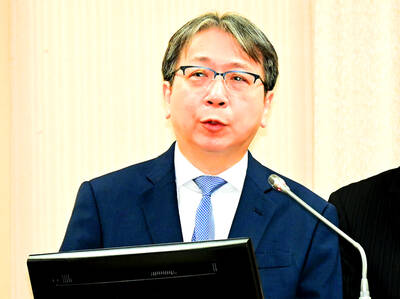
ON ALERT: Taiwan’s partners would issue warnings if China attempted to use Interpol to target Taiwanese, and the global body has mechanisms to prevent it, an official said China has stationed two to four people specializing in Taiwan affairs at its embassies in several democratic countries to monitor and harass Taiwanese, actions that the host nations would not tolerate, National Security Bureau (NSB) Director-General Tsai Ming-yen (蔡明彥) said yesterday. Tsai made the comments at a meeting of the legislature’s Foreign Affairs and National Defense Committee, which asked him and Minister of National Defense Wellington Koo (顧立雄) to report on potential conflicts in the Taiwan Strait and military preparedness. Democratic Progressive Party (DPP) Legislator Michelle Lin (林楚茵) expressed concern that Beijing has posted personnel from China’s Taiwan Affairs Office to its